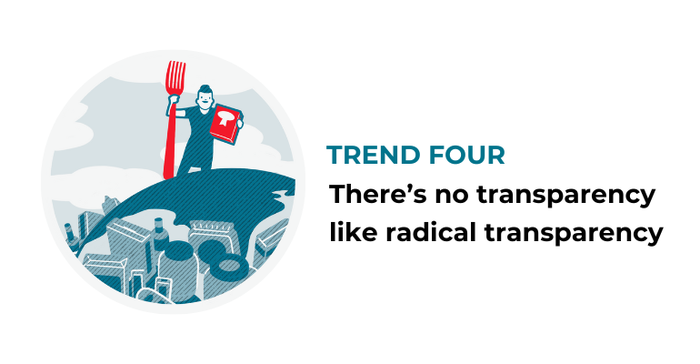
For those who have decided that 2022 is, well, so last year, here are five trends to watch for in 2023. It should come as no surprise that the majority of these trends are focused on sustainability, which is proving to be the primary motivator for many new and emerging entrepreneurs, a key factor in corporate commitments and an important “why” behind radical transparency and impact assessments. Additional trends to look out for at Natural Products Expo West and beyond include new models for earning consumer trust and a whole-body, multiple-systems approach to wellness.

Forget the razors, wine, tacos and tires for your car, the subscription age of consumption may have more to offer the wellness movement than any innovation or formulation on the shelves. Meal kits have people cooking at home and eating healthier. Personalized nutrition subscriptions offer pre-sorted supplements tailored to the consumer’s needs and goals and a model that encourages sticking to that regimen. Both of those could fit into a retail universe. With outfits like OK Capsule offering personalized pill packets branded to retailers and a whole grocery store worth of ingredients that could be packaged in grab-and-go meal kits, smart retailers are giving their customers a reason to shop brick-and-mortar regularly and helping customers achieve their wellness goals while they are in the store.
—Rick Polito, editor in chief, Nutrition Business Journal

Everything affects everything, and while the holism of this may not be new to natural health diehards, it’s an awareness that’s spreading in mainstream culture thanks in part to the growing body of medical science around the gut-related axes. Beginning with the gut-brain axis, we’ve come to recognize how the gut influences all other health systems in the body. Driving this is the vast human microbiome, colonies of microorganisms that outnumber human cells 10 to 1. Consumers are learning this, but the learnings aren’t often actionable. Retailers approaching this trend can educate on diet—including supplements—to support a healthy microbiome, because a healthy microbiome means better brain health, better heart health and even improved mood and mental health. Indeed, it’s all connected.
—Bill Giebler, content and insights director, Nutrition Business Journal

In the diverse space of sustainability, many mission-conscious brands are bringing climate solutions to market. With soaring gas and oil prices—and fossil fuels fueling climate change—consumers are paying more attention to climate change-mitigating alternatives. In response, many natural and organic brands deliver on carbon commitments and transition to renewable energy. Carbon accounting and carbon-neutral or -negative commitments are making the rounds among emerging and established brands. And as consumers feel the pangs of high gas prices on their commutes, intrigue in renewable energy, such as electric cars, solar and windmills, is growing. While transitioning to renewable energy is still nascent, there are notable upsides, namely that it could help cushion a brand’s production costs from volatile oil prices, which then can help keep consumer prices down when fossil fuel prices are high.
—Amanda Hartt, lead market analyst, New Hope Network NEXT Data & Insights

Transparency is no longer just about where food comes from or which farmer grew it. Considering food tech, climate change, inequity issues and increasing use of vague terms such as natural, clean or sustainable, consumers want to know the who, what, where, when, why and how of the products they are buying—and they depend on retailers to help them navigate it all. Certifications, audits and dietary guidelines also help. Companies can also achieve transparency by disclosing company goals (and progress toward them), ingredient lists and new initiatives. The key to success is to be clear, authentic and truthful, which also means being vulnerable.
—Nancy Coulter-Parker, content marketing director, New Hope Network

The natural products industry has churned out many a consumer-turned-entrepreneur to deliver healthy, problem-solving solutions to market. One of the most ubiquitous examples is the parent looking for allergen-, irritant- and toxin-free products for their children. But as more of these consumers wake up to macro conversations about Big Food’s egregious impacts on the planet, more and more founders are serving up food and other CPG products with environmental solutions at the forefront. These companies become enterprises on a mission to use food and agriculture as a means to address issues such as climate change, biodiversity loss and social justice. The environmental mission is so woven into their value proposition that the fact that shoppers are buying chocolate, dried fruits or nuts is secondary to the core reason for purchase. Storytelling plays a key role in delivering these mission-driven concepts to market, so more entrepreneurs are likely to share their solution-driven journeys.
—Amanda Hartt, lead market analyst, New Hope Network NEXT Data & Insights
All illustrations by Jason Schneider
About the Authors
You May Also Like
.png?width=700&auto=webp&quality=80&disable=upscale)







